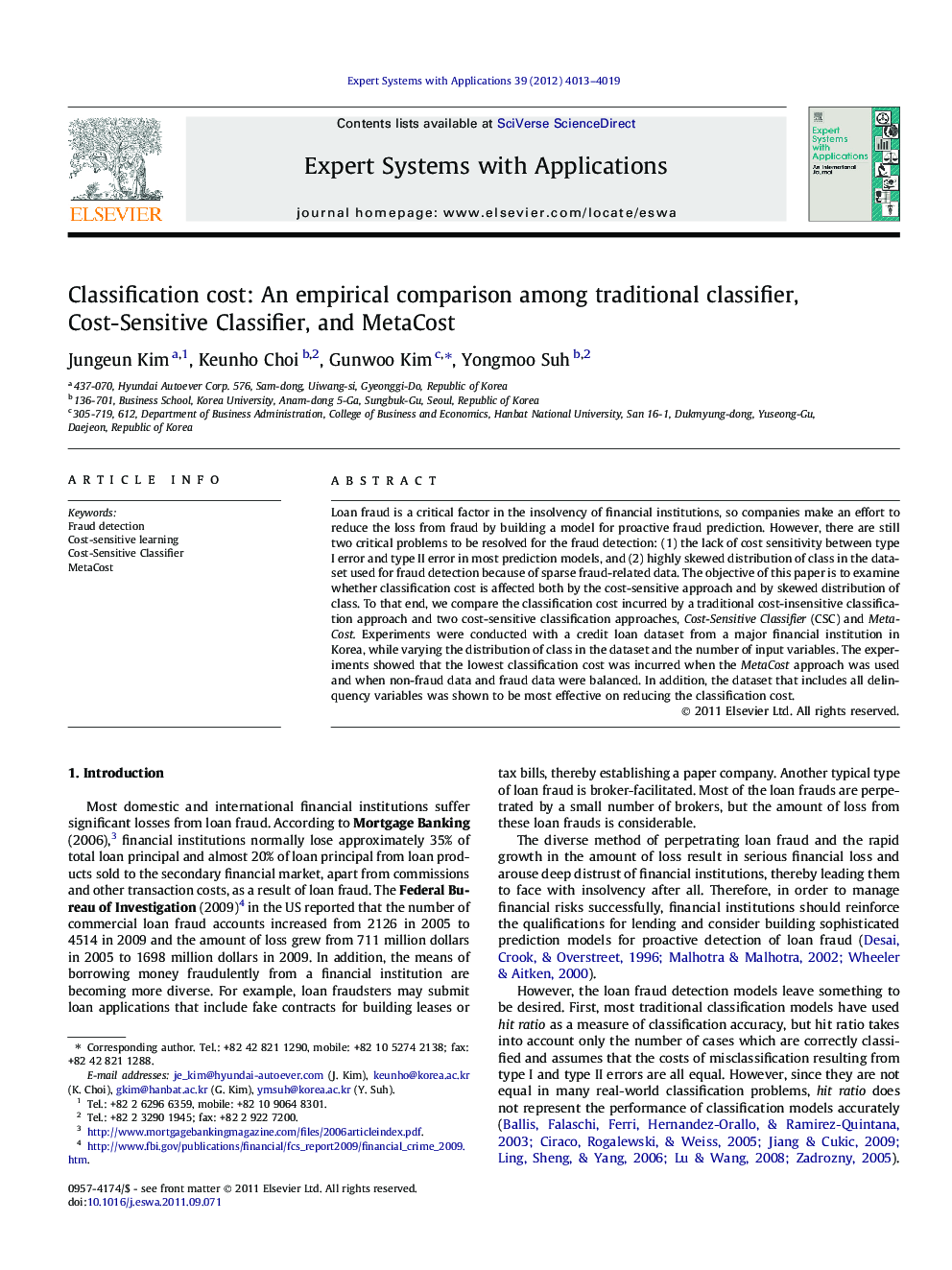| کد مقاله | کد نشریه | سال انتشار | مقاله انگلیسی | نسخه تمام متن |
|---|---|---|---|---|
| 385193 | 660863 | 2012 | 7 صفحه PDF | دانلود رایگان |

Loan fraud is a critical factor in the insolvency of financial institutions, so companies make an effort to reduce the loss from fraud by building a model for proactive fraud prediction. However, there are still two critical problems to be resolved for the fraud detection: (1) the lack of cost sensitivity between type I error and type II error in most prediction models, and (2) highly skewed distribution of class in the dataset used for fraud detection because of sparse fraud-related data. The objective of this paper is to examine whether classification cost is affected both by the cost-sensitive approach and by skewed distribution of class. To that end, we compare the classification cost incurred by a traditional cost-insensitive classification approach and two cost-sensitive classification approaches, Cost-Sensitive Classifier (CSC) and MetaCost. Experiments were conducted with a credit loan dataset from a major financial institution in Korea, while varying the distribution of class in the dataset and the number of input variables. The experiments showed that the lowest classification cost was incurred when the MetaCost approach was used and when non-fraud data and fraud data were balanced. In addition, the dataset that includes all delinquency variables was shown to be most effective on reducing the classification cost.
Journal: Expert Systems with Applications - Volume 39, Issue 4, March 2012, Pages 4013–4019